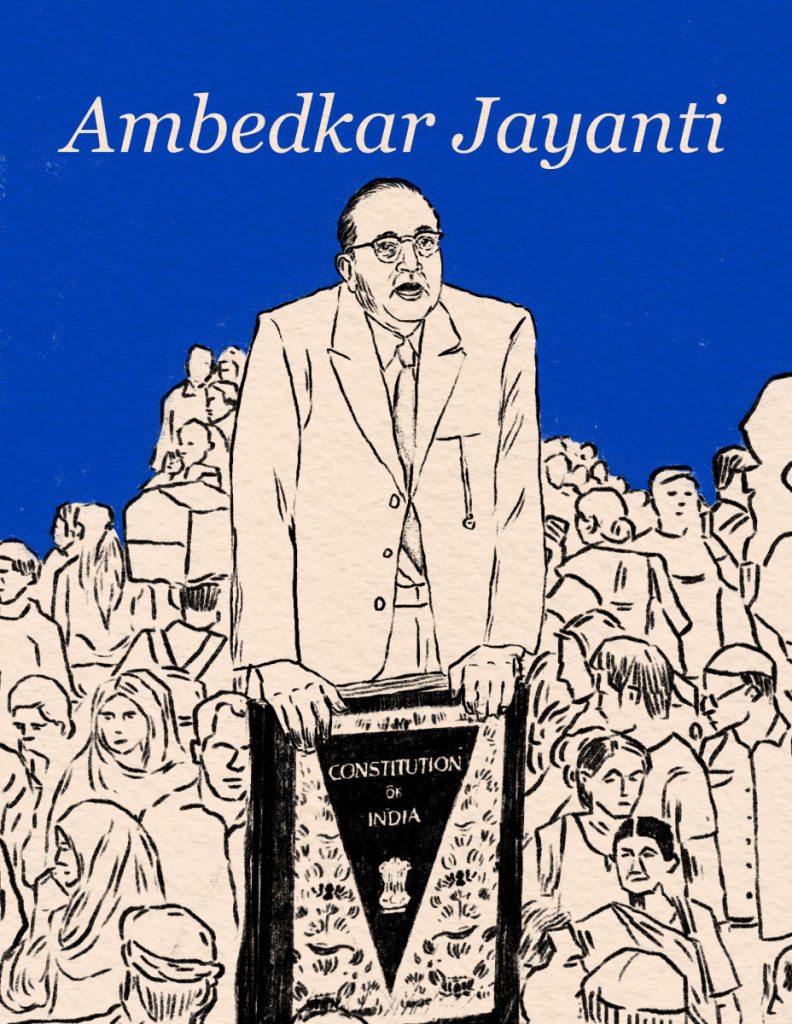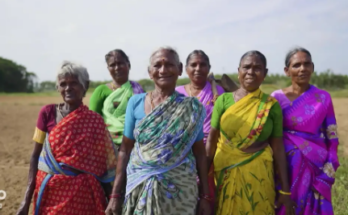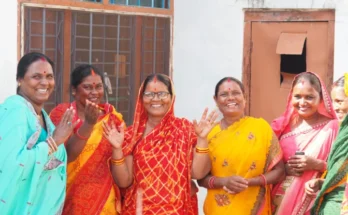
The year 2024 will not only be marked by the commercial success of big-ticket Indian blockbusters like Stree 2, Singham Again, Hanu Man, and Pushpa-2, but also by a quiet yet powerful shift in the narrative landscape of Indian cinema. Alongside these crowd-pulling spectacles, a parallel cinematic movement is gaining momentum, one that is socially conscious, politically aware, and deeply rooted in the lived realities of India’s marginalised communities, especially of the Dalits.

Films like Vedaa and Amar Singh Chamkila in Hindi, Satyashodhak in Marathi, and Tamil productions like Thangalaan and Vaazhai have made a striking impact by engaging with the theme of caste-based discrimination and placing Dalit-Bahujan characters at the centre of their storytelling. This shift is especially significant considering the historical erasure or tokenised portrayal of Dalit voices in mainstream Indian cinema, till the recent past.
This evolution signals a crucial departure from the long-standing tradition of films that largely catered to the cultural, political, and aesthetic sensibilities of India’s dominant social elites. Now, a more inclusive, nuanced form of storytelling is emerging, one that not only acknowledges caste realities but also embraces Ambedkarite thought as a framework for cinematic exploration.
These new narratives depict Dalit characters not as passive victims or background figures, but as empowered protagonists with agency, dignity, and purpose. They challenge the conventional grammar of Indian filmmaking and open up space for a more democratised cultural discourse. In doing so, this parallel stream is not just reshaping representation but redefining what mainstream Indian cinema can aspire to be. Importantly, Ambedkar and his ideas are getting much more resonance on the silver screen. This can be understood as a nascent but promising genre that would surely democratise the Indian film industry.
The neglect of Ambedkar
For much of its history, Indian cinema has functioned within a framework dictated by the cultural tastes and priorities of the social elite. Shaped by commercial imperatives and the worldview of dominant caste filmmakers, mainstream films have systematically sidestepped narratives that question the deeply entrenched Brahmanical social order or confront the realities of caste-based discrimination. As a result, Indian cinema has long failed to engage meaningfully with the experiences, struggles, and aspirations of marginalised communities, especially Dalits.
Among the most glaring omissions in this landscape is the near-complete erasure of Dr. B.R. Ambedkar, one of the most influential architects of modern India. Despite his monumental contributions to the Indian constitution, social justice, and the anti-caste movement, Ambedkar has remained conspicuously absent from the cinematic imagination. Biographical films and historical epics have consistently celebrated the lives of national icons like Gandhi, Nehru, Bhagat Singh, and Subhas Chandra Bose (often mythologising their struggles and ideologies). Yet, Ambedkar’s legacy has either been sidelined or completely ignored. Even Richard Attenborough’s internationally acclaimed Gandhi (1982), which won multiple Academy Awards and claimed to capture India’s freedom struggle, failed to acknowledge Ambedkar’s critical role in shaping the nation’s democratic and constitutional foundation.
Until the 1990s, Ambedkar’s presence on screen was virtually non-existent. A few art-house films may have alluded to caste-based exploitation, but they stopped short of engaging with Ambedkar’s radical critique of Brahmanical social order or his vision for an egalitarian society. This cinematic silence persisted even as Dalit political movements, such as the rise of the Dalit Panthers in Maharashtra and the emergence of the Bahujan Samaj Party in north India during the 1970s and 1980s, began to redefine India’s socio-political terrain. While these movements were making visible interventions in public discourse, cinema remained curiously disengaged from their ethos and demands.
Mainstream Indian films continued to depict a sanitised version of society, largely centred on urban elites or upper-caste rural settings, rarely acknowledging the brutal realities of caste or the systemic violence of untouchability. The failure to reflect the changing socio-political dynamics or the rising assertion of Dalit-Bahujan voices reveals a troubling disconnect between popular cinema and ground realities. This omission is not merely artistic oversight but it is a form of cultural exclusion that reinforces existing hierarchies by rendering invisible those who challenge them.
The emergence of Ambedkar on screen
A notable shift began in the mid-1990s—a decade that witnessed the first glimmers of cinematic engagement with Dr. Ambedkar and the issues of caste. In 1994, Bandit Queen brought attention to caste oppression and Dalit resistance, promoting distinct cinematic stature to the real life heroes. Regional cinema, particularly Marathi films like Mukta (1995) and Tamil productions like Iraniyan (1999), made brief but significant efforts to depict caste struggles and reflect Ambedkar’s ideological presence. Yet these remained isolated exceptions in an otherwise indifferent mainstream film industry.
Ironically, Ambedkar’s image was more often seen as a background prop (positioned in courtrooms, police stations, or government offices) than as a source of philosophical or political inspiration for the lead characters. Instead, his passive visual presence, used to authenticate corrupt institutions rather than challenge them. Such instrumentalisation of Ambedkar’s image only reflected that the industry only offered superficial engagement with his legacy.
In the following years, a few biopics attempted to correct this erasure, such as the the English-Hindi Babasaheb Ambedkar, the Kannada film Dr. B.R. Ambedkar (2005), and Marathi films like Rama Bai Bhimrao Ambedkar (2011) and Bal Bhimrao (2018). However, despite their earnestness, these films failed to reach wider audiences or achieve significant commercial success, largely due to their limited production values and lack of institutional support.
The real transformation began when filmmakers from Dalit-Bahujan backgrounds began entering the industry, bringing with them stories not just of marginalisation, but of assertion, pride, and political clarity. Nagraj Manjule’s powerful films (Fandry, Sairat, and Jhund) represent a pivotal moment in this cinematic evolution. His work, rooted in lived experience and Ambedkarite ideology, presents Dalit protagonists who are complex, aspirational, and defiant. Similarly, Pa. Ranjith’s films (Kabali and Kaala) challenge the dominant caste narratives and inject Ambedkar’s ideas of dignity, resistance, and social justice into the mainstream.
These films do not treat Ambedkar as a token reference. Instead, his ideals are woven into their visual language, character arcs, and thematic focus. Whether it’s the collective celebration of Ambedkar Jayanti in Jhund, or the symbolic act of asserting dignity through personal style and confidence in Kabali, these moments powerfully channel Ambedkar’s philosophy into contemporary cultural expression.
Recent films such as Jai Bhim and Maamannan take these explorations further, directly engaging with issues of police brutality, caste violence, and systemic injustice from an unapologetically Ambedkarite lens. In Guthlee and Kasturi (2023), the inner world of Dalit children seeking education and self-respect becomes the narrative core, beautifully echoing Ambedkar’s lifelong emphasis on education as the path to emancipation. Likewise, Amar Singh Chamkila (2023) celebrates the life and struggles of a Dalit folk icon, underlining the challenges Dalit artists face in India’s cultural fields.
Ambedkar on OTT: A digital renaissance
Alongside this cinematic reawakening, OTT platforms have played a crucial role in expanding the reach and depth of Dalit narratives. Freed from the constraints of box office logic and censorship politics, streaming platforms have allowed for richer, more daring portrayals of Ambedkar and Dalit life.
Dramatic series such as Ek Mahanayak: Dr. Ambedkar (Hindi) and Dr. Ambedkar: Ek Mahamanvachi Gauravgatha (Marathi) offer detailed, serialized accounts of his life and mission, reaching audiences that traditional cinema could never fully capture. Meanwhile, ground-breaking documentaries like Chaityabhumi, Jai Bhim Comrade, and B.R. Ambedkar: Now and Then blend archival footage with contemporary voices, showcasing both the historic and ongoing struggles of Dalit communities.
Neeraj Ghaywan’s critically acclaimed episode in Made in Heaven Season 2 is another major milestone. It provides a subtle yet piercing look into caste, privilege, and memory, centred on a Dalit character whose identity is shaped by Ambedkar’s ideas of self-respect and justice. Similarly, web series like Dahaad and Ashram tackle caste issues within genres like thriller and drama, normalising the presence of Dalit narratives within popular formats. Such prominence to Ambedkar and his ideas on silver screen is a significant development as for the first time the audience is witnessing nuanced Dalit-Bahujan characters and their social world, struggling to make their mark in the society.
What sets this digital wave apart is the growing number of Dalit-Bahujan creators behind the camera. This insider perspective brings not just authenticity, but a deeper political conviction that reshapes how Dalit stories are told, as it shifts from conventional narratives of victimhood to those of resistance, agency, and pride.
Perhaps the most symbolic recognition of Ambedkar’s global relevance came in Ava DuVernay’s 2023 film Origin, where he appears alongside global icons like Martin Luther King Jr., as part of a larger narrative about systemic discrimination based on race, religion and caste. Portrayed by Gaurav Pathania, Ambedkar is presented as a key figure in the global fight for dignity and human rights, finally placing him in the pantheon of world thinkers and change-makers.
The future of Ambedkarite cinema
This year with the upcoming films like Jai Bhim Panther (Marathi), Phule, Birsa Munda (Hindi) and Bison (Tamil), it appears that Dalit genre has emerged as a significant part of the cinema industry. These films promote social sensitivity in cinema and engage the audience with its distinct cinematic style, realistic landscape and aesthetical values associated with the Dalit-Bahujan groups. At the heart of this transformation is also the growing visibility of Dr. Babasaheb Ambedkar, whose life and ideas are finally receiving a visible space on the screen space.
We could thus say the growing presence of Ambedkar and his ideas across cinema, television, and digital platforms signals more than a symbolic gesture, it marks the emergence of a parallel Dalit Cinema, one that challenges the hegemony of elite-dominated narratives and reclaims space for historically silenced voices. This is not just a cultural shift; it is a profound political and ideological movement aimed at democratising Indian media. By bringing Ambedkar’s philosophy into the mainstream and even onto the global stage (with films like Origin), this emergent Dalit-Bahujan media culture pushes for a storytelling paradigm rooted in equality, resistance, and social justice. While still in its infancy, this wave has the transformative potential to reshape Indian cinema into a more inclusive, conscious, and representative space. This can emerge as a parallel cinema movement where the marginalised are no longer mere spectators, but authors of their own stories.
Source: The Wire



